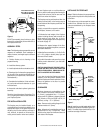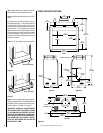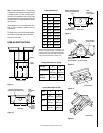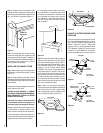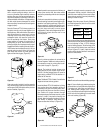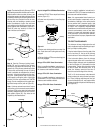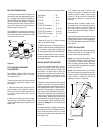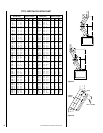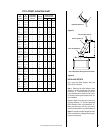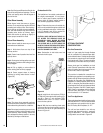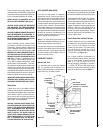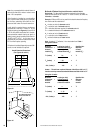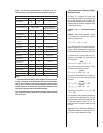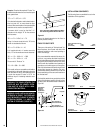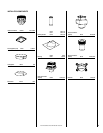
NOTE: DIAGRAMS & ILLUSTRATIONS NOT TO SCALE.
17
Answer - The minimum required thickness of the Micore 160 is .417”,
therefore round up to nearest standard thickness available which is 1/2”.
** If the hearth extension material(s) that is intended to be used is NOT listed
on Table 1, the material can still be used if the material(s) is noncombustible.
However, the manufacturer of the material must provide either the listed k-
value per inch or r-value per inch with listed thickness so that the minimum
thickness required for the hearth can be calculated (per instructions on this
Page and/or as specified in the NFI Certification manuals).
Note: Also see NFI (National Fireplace Institute) Certification Manuals showing
other acceptable calculation methods and acceptable alternate materials
which can be used.
Listed Material
k (per inch) r (per inch) Listed Min.Thickness
Listed Material .84
K
L
1.19
r
L
1
"
T
L
** Approved Alternate Materials for Floor/Hearth Protection
AlternativeMaterials Thermal Values MinimumThickness
(rounded to nearest 1/8 inch)
k (per inch)
K
M
r (per inch)
r
M
Min. Thickness
T
M
Kaowool M Board .47 2.13 .56" (1/2")
Micore 160™
U.S. Gypsum
.35 2.86 .42" (3/8")
Micore 300™
U.S. Gypsum
.46 2.17 .55" (1/2")
Durock™ Cement Board
U.S. Gypsum
1.92 .52 2.29" (2-1/4")
Hardibacker™ 1.95 .513 2.32" (2-3/8")
Hardibacker 500™ 2.30 .435 2.74" (2-3/4")
Cultered Stone Hearth-
stone™
2.82 .355 3.36" (3-3/8")
Wonderboard 3.23 .31 3.85" (3-7/8")
Super Firetemp M
Johns-Manville
.61 1.64 .73" (3/4")
Super Firetemp L
Johns-Manville
.54 1.85 .64" (5/8")
Face brick 9.00 .111 10.71" (10-3/4")
Common brick 5.00 .20 5.95" (6")
Cement mortar 5.00 .20 5.95" (6")
Ceramic tile 12.5 .08 14.88" (14-7/8")
Marble 11 .09 13.10" (13-1/8")
Table 1
Calculating Minimum Thickness if Multiple
Materials are Used
At times it is important to know what
combination of materials are acceptable for
use as floor protection. The “R values” are
used to determine acceptable combinations of
materials because “R values” are additive where
r and k values are not.
“R value” = 1/k = “r” x thickness of material
used
Example:
Given that the required “R value”
for a suitable floor protector used must be
equal to or greater than:
“R” = r
L
x T
L
= 1.19 x 1” = 1.19.”
If it is desired to elevate a marble hearth ex-
tension to a level of 5” or more above the floor
surface. What combination of noncombus-
tible materials can be used to accomplish this?
If common brick is used so that the 3 1/2”
dimension is the height, “R” for the common
brick becomes:
brick
“R”
M
= r
M
x T
S
= 0.20 x 3 1/2" = .70
Using 1/2” of mortar to set the brick, “R” for
the mortar is calculated as follows:
mortar
“R”
M
= r
M
x T
S
= 0.20 x 1/2" = .10
Next, a 3/4" marble slab set in 1/2" mortar cov-
ers the brick, “R” for the marble and mortar
becomes:
marble
“R”
M
= r
M
x T
S
= 0.05 x 3/4" = .038
mortar
“R”
M
= r
M
x T
S
= 0.20 x 1/2" = .10
The sum of all “R values” is: .70 + .10 +. 038
+ .10 = .938
This would NOT be an acceptable combination
of material for the hearth extension since the
total calculated “R value” of the materials used
is under the required “R value” of 1.19. An
additional layer of insulating materials must
be used.
Note:
Also see NFI Certification Manuals for
expanded explanation on calculating “R val-
ues” when multiple materials are used.



